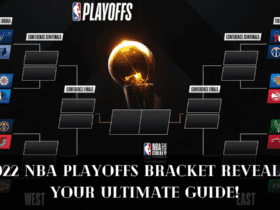The Super Bowl is the biggest football game of the year, drawing millions of viewers and bettors alike. Betting on the Super Bowl has a long and storied history, with spreads and over/unders playing a significant role in how fans engage with the game. This article delves into the betting spreads, over/unders, and results for each Super Bowl, providing a comprehensive look at how these factors have evolved over the years.
What Are Spreads and Over/Unders?
Before diving into the history, let’s understand some key betting terms:
- Spread: This is the number of points by which a team is expected to win. Bettors can wager on whether the favored team will win by more than the spread (cover the spread) or whether the underdog will lose by less than the spread or win outright.
- Over/Under: This is the total number of points expected to be scored by both teams combined. Bettors can choose whether the actual points scored will be over or under this set number.
Super Bowl Betting History
Each Super Bowl has its unique betting story, with spreads and over/unders varying each year. Here’s a look at some of the betting history for the early Super Bowls:
| Year | Super Bowl | Spread | Over/Under | Result |
|---|---|---|---|---|
| 1967 | Super Bowl I | Green Bay -14 | 45 | Green Bay 35, Kansas City 10 |
| 1968 | Super Bowl II | Green Bay -13.5 | 43 | Green Bay 33, Oakland 14 |
| 1969 | Super Bowl III | Baltimore -18 | 40 | New York Jets 16, Baltimore 7 |
| 1970 | Super Bowl IV | Minnesota -12 | 39.5 | Kansas City 23, Minnesota 7 |
Add more rows for each Super Bowl to continue the history.
Trends in Super Bowl Betting
Over the years, several trends have emerged in Super Bowl betting. Some games have featured large spreads, while others have had narrow margins. Similarly, the over/under figures have varied significantly.
Biggest Spreads
- Super Bowl III: Baltimore -18
- Super Bowl XXIX: San Francisco -18.5
Smallest Spreads
- Super Bowl XLIX: Pick ‘Em (No Spread)
High Over/Unders
- Super Bowl LI: 57.5
Low Over/Unders
- Super Bowl VII: 33
Impact of Spreads and Over/Unders
Spreads and over/unders greatly influence betting behavior and reflect the perceived strength and scoring potential of the teams involved.
- Large Spreads: Indicate a mismatch, where one team is expected to dominate.
- Small Spreads: Suggest closely matched teams, leading to more competitive games.
- High Over/Unders: Indicate expectations of a high-scoring game.
- Low Over/Unders: Reflect predictions of a defensive battle or lower-scoring affair.
Famous Super Bowl Betting Stories
Joe Namath’s Guarantee
In Super Bowl III, Joe Namath famously guaranteed a win for the underdog New York Jets. The Jets’ victory over the heavily favored Baltimore Colts shocked the sports world and bettors.
Super Bowl XXV
The New York Giants were underdogs against the Buffalo Bills. The Giants won by one point, leading to significant losses for those who bet on the Bills to cover the spread.
Super Bowl LI
The New England Patriots made a historic comeback from a 25-point deficit to win against the Atlanta Falcons. Bettors who wagered on the Patriots or the over benefitted greatly from this dramatic turn of events.
Frequently Asked Questions
What Is the Biggest Super Bowl Spread?
The largest spread was 18.5 points in Super Bowl XXIX.
How Do Over/Unders Work in the Super Bowl?
Over/unders predict the total points scored by both teams combined, and bettors wager on whether the actual points will be over or under this number.
Which Super Bowl Had the Highest Over/Under?
Super Bowl LI had the highest over/under at 57.5 points.
What Was the Closest Super Bowl Spread?
Super Bowl XLIX had a spread of just 1 point.
Conclusion
Betting on the Super Bowl adds an extra layer of excitement to the game. Understanding the history of spreads and over/unders can provide valuable insights for fans and bettors. Each year brings new stories and surprises, making the Super Bowl a thrilling event for all involved.






Leave a Reply